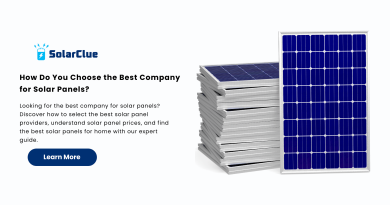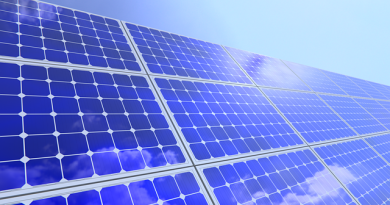how to ground solar panels
Grounding is a critical aspect of solar panel installation that ensures the safety and efficiency of the system. Proper grounding protects against electrical faults, reduces the risk of shock, and helps prevent damage from lightning strikes. This comprehensive guide explains the importance of grounding solar panels, explores different grounding methods, and provides a step-by-step guide to grounding a solar panel system. We’ll also discuss safety precautions, troubleshooting tips, and legal requirements.
Table of Contents
- 1 The Importance of Grounding Solar Panels
- 2 Different Grounding Methods and Their Advantages
- 3 Table: Comparison of Grounding Methods
- 4 Step-by-Step Grounding Process
- 5 Safety Precautions and Troubleshooting Tips
- 6 Grounding Requirements for Various Solar Panel Systems
- 7 The Role of Grounding in Lightning Protection
- 8 Common Grounding Issues and Solutions
- 9 The Impact of Grounding on System Performance and Efficiency
- 10 Legal and Regulatory Requirements for Grounding Solar Panels
- 11 Case Studies of Successful Solar Panel Grounding
- 12 FAQ Section
- 13 Conclusion
The Importance of Grounding Solar Panels
Safety:
- Shock Prevention: Grounding provides a path for electrical currents to safely dissipate into the earth, reducing the risk of electric shock.
- Fire Prevention: Proper grounding minimizes the risk of electrical fires caused by faults or lightning strikes.
System Protection:
- Lightning Protection: Grounding helps to protect the solar panel system from lightning strikes by directing the electrical surge into the ground.
- Equipment Protection: Grounding protects the solar panels and other system components from electrical surges and faults, reducing the likelihood of damage.
Regulatory Compliance:
- Code Requirements: Electrical codes and regulations often mandate proper grounding for all electrical systems, including solar panels, to ensure safety and reliability.
Different Grounding Methods and Their Advantages
Equipment Grounding Conductor (EGC):
- Description: The EGC connects all metallic parts of the solar panel system, including the frame and mounting hardware, to the ground. It provides a path for electrical currents to return to the ground in case of a fault.
- Advantages: Ensures the safety of the entire system, easy to install, commonly used in residential solar installations.
Grounding Rods:
- Description: A grounding rod is a metal rod driven into the earth, typically made of copper or galvanized steel. It is connected to the system’s grounding conductor, providing a direct path to the ground.
- Advantages: Provides a strong, reliable grounding point, effective in protecting against lightning and electrical surges.
Grounding Clamps:
- Description: Grounding clamps are used to securely connect the grounding conductor to the solar panel frames, rails, or other metallic parts of the system.
- Advantages: Provides a secure connection, easy to install, ensures proper grounding continuity across the system.
Table: Comparison of Grounding Methods
| Grounding Method | Description | Advantages |
|---|---|---|
| Equipment Grounding Conductor (EGC) | Connects all metallic parts to the ground | Ensures system safety, easy to install, widely used |
| Grounding Rods | Metal rods driven into the ground | Strong grounding point, effective against lightning and surges |
| Grounding Clamps | Clamps used to connect grounding conductors to system components | Secure connection, ensures grounding continuity |
Step-by-Step Grounding Process
- Plan the Grounding System:
- Assess the System Layout: Identify all the metallic components of the solar panel system that need to be grounded.
- Choose Grounding Points: Select suitable locations for grounding rods and where grounding conductors will connect to the system.
- Install Grounding Rods:
- Select the Location: Choose a location close to the solar panels or inverter for the grounding rod.
- Drive the Rod into the Ground: Use a hammer or a grounding rod driver to drive the rod at least 8 feet into the earth.
- Connect the Grounding Conductor:
- Attach to Grounding Rod: Use a grounding clamp to securely connect the grounding conductor to the grounding rod.
- Connect to Solar Components: Run the grounding conductor to the solar panels, inverter, and other metallic parts. Use grounding clamps to attach the conductor to each component.
- Bond All Components:
- Ensure Continuity: Make sure all metallic parts are connected to the grounding system, ensuring continuity across the entire system.
- Check Connections: Inspect all connections to ensure they are tight and secure.
- Test the Grounding System:
- Use a Multimeter: Test the resistance between the grounding rod and the grounded components. The resistance should be low, typically less than 25 ohms.
Safety Precautions and Troubleshooting Tips
Safety Precautions:
- Turn Off Power: Always turn off the solar system before working on grounding to avoid electric shock.
- Use Proper Tools: Ensure you use the correct tools and materials for grounding, such as copper grounding rods and weather-resistant grounding clamps.
- Wear Protective Gear: Use gloves and safety glasses to protect yourself during the installation.
Troubleshooting Tips:
- High Resistance: If the grounding resistance is too high, check for loose connections or consider driving additional grounding rods.
- Loose Connections: Ensure all grounding clamps are tight and secure. Loose connections can compromise the effectiveness of the grounding system.
- Corrosion: Regularly inspect grounding connections for corrosion, especially in areas with high humidity or saltwater exposure. Replace corroded components as needed.
Grounding Requirements for Various Solar Panel Systems
Residential Systems:
- Typical Requirements: Residential solar panel systems usually require grounding of the panel frames, mounting hardware, and inverter. The EGC method is commonly used.
Commercial Systems:
- Additional Requirements: Larger commercial systems may require multiple grounding rods and more extensive grounding networks to ensure safety and compliance.
Off-Grid Systems:
- Battery Grounding: Off-grid systems with battery storage require additional grounding for the batteries and charge controllers to protect against electrical faults.
The Role of Grounding in Lightning Protection
Lightning Strikes:
- Protection: Grounding provides a path for lightning-induced surges to safely dissipate into the earth, reducing the risk of damage to the solar panel system.
- Surge Protection Devices (SPDs): Consider installing SPDs alongside grounding to further protect the system from lightning-induced surges.
Common Grounding Issues and Solutions
Improper Installation:
- Issue: Poorly installed grounding systems can lead to high resistance, reducing the effectiveness of grounding.
- Solution: Ensure all connections are secure, and grounding rods are driven deep enough into the ground.
Corrosion:
- Issue: Corrosion can compromise grounding connections, particularly in coastal or humid environments.
- Solution: Use corrosion-resistant materials and regularly inspect and maintain the grounding system.
Disconnected Components:
- Issue: If all metallic components are not properly bonded, the grounding system may be ineffective.
- Solution: Check for continuity and ensure that all components are securely connected to the grounding system.
The Impact of Grounding on System Performance and Efficiency
System Efficiency:
- Minimal Impact: Grounding itself does not significantly impact the energy production of the solar system but ensures the system’s safety and longevity.
Preventing Downtime:
- Protection Against Faults: Proper grounding helps prevent damage to the system, reducing the risk of downtime and costly repairs.
Legal and Regulatory Requirements for Grounding Solar Panels
Electrical Codes:
- NEC Compliance: In the United States, grounding must comply with the National Electrical Code (NEC), which sets standards for safe electrical installations.
- Local Regulations: Always check local building codes and regulations, as they may have additional grounding requirements.
Inspection Requirements:
- Permit Inspections: In many areas, a permit and inspection are required for solar installations, including the grounding system. Ensure your system is inspected and approved by a qualified inspector.
Case Studies of Successful Solar Panel Grounding
Case Study 1: Residential Solar Installation:
- Location: Arizona, USA
- System: 5 kW grid-tied system
- Grounding Method: EGC with grounding rod
- Outcome: The homeowner reported no issues with grounding over 10 years of operation, even during lightning storms.
Case Study 2: Commercial Solar Farm:
- Location: California, USA
- System: 50 MW solar farm
- Grounding Method: Multiple grounding rods and extensive EGC network
- Outcome: The system has operated efficiently with no grounding-related failures, demonstrating the effectiveness of a robust grounding strategy.
FAQ Section
- Why is grounding solar panels important?
- Grounding is essential for safety, protecting against electrical faults, preventing shock hazards, and ensuring compliance with electrical codes.
- What are the common methods for grounding solar panels?
- Common grounding methods include the Equipment Grounding Conductor (EGC), grounding rods, and grounding clamps, each serving to safely direct electrical currents into the ground.
- How do I know if my solar panel system is properly grounded?
- You can use a multimeter to test the resistance between the grounding rod and the grounded components. Proper grounding typically shows a resistance of less than 25 ohms.
- Can grounding protect my solar panels from lightning?
- Yes, grounding helps direct lightning-induced surges into the ground, reducing the risk of damage. For added protection, consider using surge protection devices (SPDs).
- What are the legal requirements for grounding solar panels?
- Grounding must comply with the National Electrical Code (NEC) in the U.S. and any local regulations. Permits and inspections may also be required to ensure the system meets safety standards.
Conclusion
Proper grounding is a critical component of any solar panel installation, ensuring safety, protecting equipment, and complying with regulations. By understanding the different grounding methods, following a step-by-step installation guide, and addressing potential issues, you can ensure that your solar panel system operates safely and efficiently for many years. Whether you’re installing a small residential system or a large commercial array, grounding is essential to the long-term success and reliability of your solar investment.



